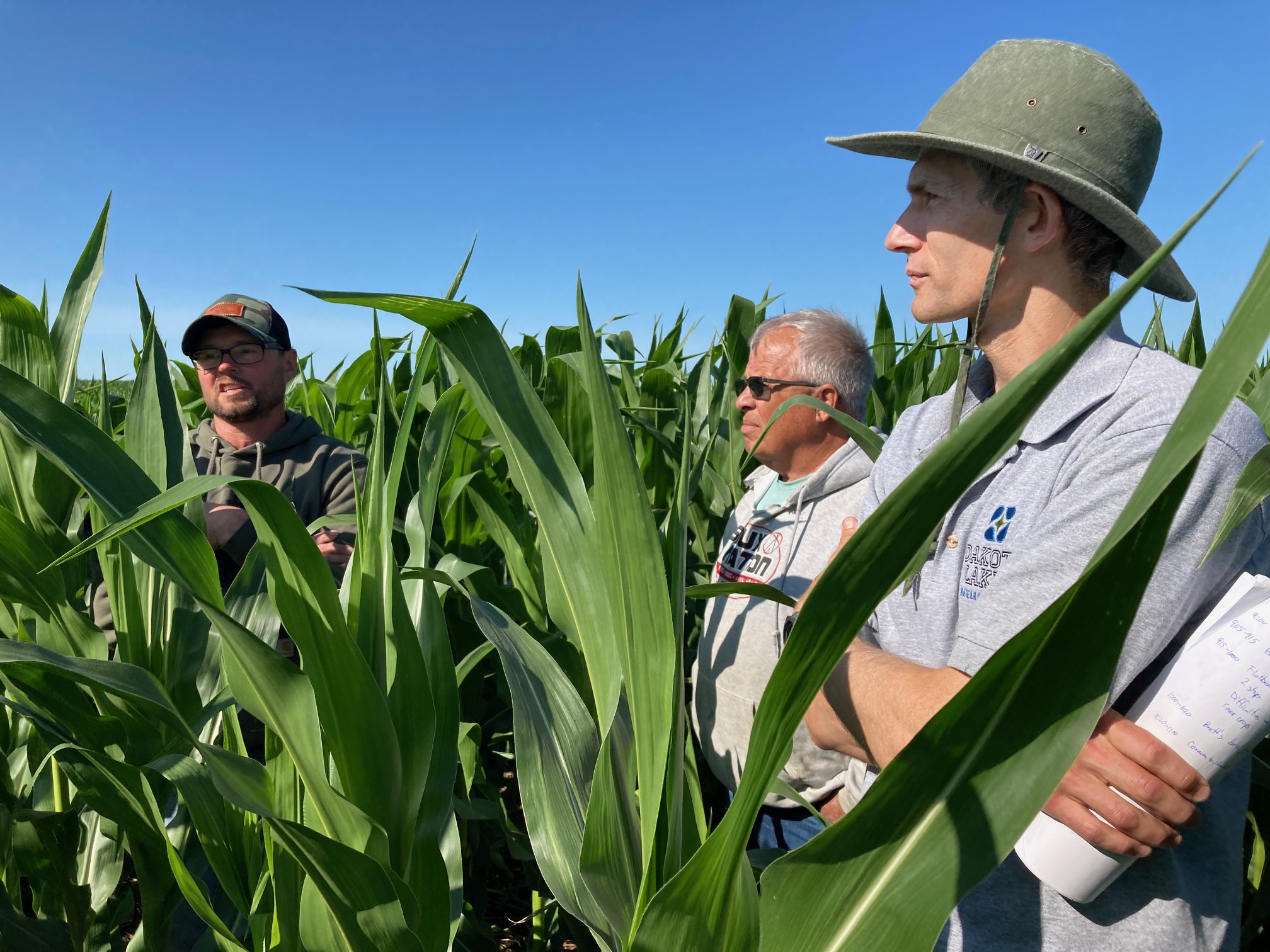Field Day: Hailstorm damage leads to experiments with cover crops, grazing
Sunday, August 6, 2023

At the Dakota Lakes field day on Thursday, July 6, 2023, Hoven, S.D., Dakota Lakes board member Brett Huber (above, left) talked about a July 7, 2022, storm that completely took out a 200-acre field of sunflowers. Faced with the prospect of a bare field for the remainder of the season, Huber, who farms in partnership with his neighbor, rancher Luke Perman, decided to pivot and used the sunflower field for grazing.
Huber has partnered with Perman for more than 15 years. The partnership between these two producers works well, in part because they have adjoining acreages which helps create efficiencies.
But most important is that the pair have complementary skills and knowledge and have total trust in each other.
“We don’t worry about each other’s decisions,” Huber said.
Perman agreed. “There’s a high level of trust,” he said. “You could have this sort of arrangement with someone you don’t have a long-term relationship with, but you’d want to have things thought out or written out ahead of time.”
Shortly after that July, 2022, storm, Huber seeded a multi-species cover crop directly into the sunflowers without spraying the sunflowers out. The mix contained spring wheat, soybeans, a little sorghum, Proso millet and radish.
Huber said the cover crops grew well, and so Perman, who handles the livestock side of both operations, turned cattle out onto the cover crop for about a month, starting on Nov. 1, so the duo was able to save feed costs for that period of time.
This spring, the same field was no-tilled to corn on May 1. His variable-rate planting ranged from 24,000 to 31,000. While the challenging spring weather delayed emergence, Huber said germination finally happened about 18 days later and he got about a 95% stand.
While he fertilizes for a goal of 200 bushels per acre on good ground and 140 to 150 on hilltops, Huber said at the time of the field day the corn looked like it would average somewhere between 160 and 180 bushels per acre at harvest time later this season.
Besides having gotten a month of feed from the field, Huber’s goal with growing cover crops is to help improve the soil. One of the five principles of soil care, keeping a living root in the soil as long as possible helps build the soil aggregates that reduce soil erosion, improve water retention, boost nutrient cycling and more. So even without the grazing benefit, Huber’s land benefitted with his decision to seed a cover crop.
When growing cover crops, there’s a learning curve, even for farmers who have grown them for several years. Here are three lessons learned from this experiment in grazing cover crops.
- Choose cover crops wisely: Huber’s mix contained Proso millet, which sets seed under stress, making it a good variety to use for grain. But that also means it can become a weed the following year. Huber said a grazing or haying variety of millet might have made for a better choice because they go to seed later, and more of the seed heads would have gotten grazed off.
- Don’t let millet go to seed: Proso millet is a warm-season grass. Huber used a pre-emergent grass herbicide on the corn (also a warm-season grass) in the spring and it worked to combat his foxtail, which is a cool-season grass, but the millet survived, requiring a rescue herbicide treatment after corn emergence.
- Herbicides can affect cover crop germination: Huber had used the appropriate herbicides for sunflowers, but when it came time to pivot to cover crops, the herbicides limited his cover crop choices. When growing cover crops during the same year as a cash crop, keep in mind that you may have to be selective about the cover crops based on cash crop herbicide choices.
Categories: News